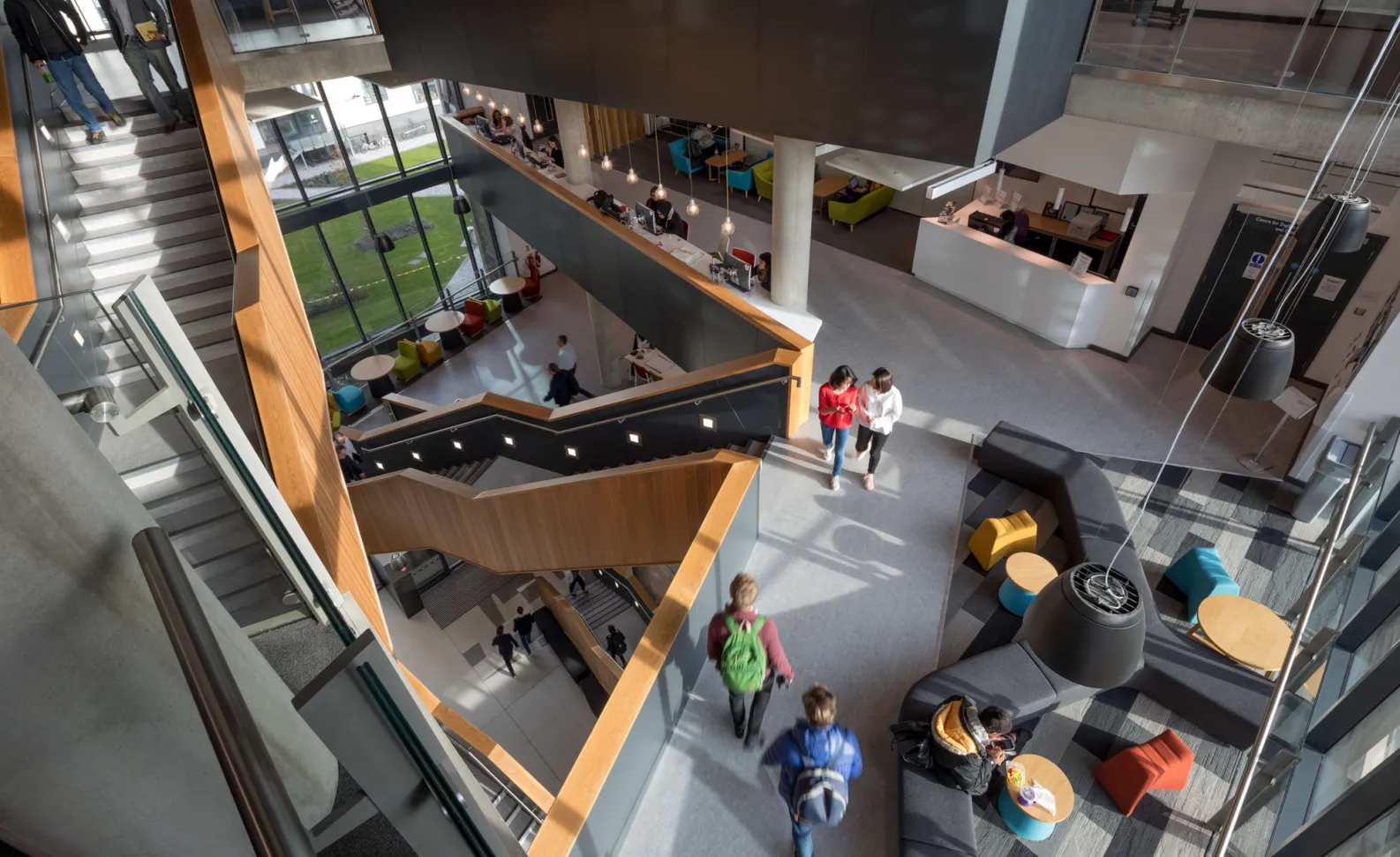Insight
Futureproofing education: Retrofitting university estates
20 Jan 2025

Kieran Dyer
Director
Universities and other members of the higher education sector are facing increasing pressure to tackle sustainability, particularly when it comes to their estates. Some of this is driven by targets, but there is also a priority when it comes to investment, student growth, communities and public opinion. Retrofitting presents both opportunities and challenges for these institutions, as described by our director, Kieran Dyer.
Universities are in a unique position when it comes to decarbonisation, being responsible for large, complex estates often in prime locations. Figures from the Higher Education Statistics Agency show that the 133 providers which submitted data for 2021-22 released 1.4 million tonnes of carbon dioxide emissions.
This presents an opportunity to make a real and meaningful impact, as well as show innovation and leadership in this sphere. However, there are also many obstacles facing these estates that put universities at risk of not being able to fulfil their ambitions, including ageing or protected buildings and high operational costs.
Attitudes can also vary in terms of approach, and while retrofitting is a popular method for improving building efficiency, there is still an argument for building new.
Balancing preservation with progress
Preserving history is important to many university estates, particularly where Grade listed buildings are concerned. Working with clients on historic estates can present issues when looking at the practicalities of delivering retrofit to carbon net zero standards without ruining the fabric of the building.
What is essential in these situations is to balance the maintenance plan with the implementation of an upgrade and retrofit plan. This must be done case-by-case, due to the varying typologies associated with different building ages. For example, a 1960s estate could be built with a concrete frame and then a brick skin, so there must be a strategy to work with that. And of course, for older buildings these strategies can become more complex.
To protect historic character but also upgrade spaces for efficiency, we must look at ways to retrofit sensitively. Historic England recently shared its advice on how to ‘improve the energy efficiency of historic buildings whilst conserving their significance and ensuring they remain viable places to live in the future’. So while university estates may be reluctant to let go of the heritage upon which they were founded, there is clearly a pressing need to look to the future.
Making an impact
Looking at university location and size, it’s interesting to see the way campuses are almost like small towns, and how city-based universities must blend into their surroundings.
The latter brings with it some challenges of its own when thinking about how to improve estates, particularly where there simply isn’t the space to consider new buildings. Instead, refurbishment and retrofit projects are the only option to upgrade current university stock or nearby buildings.
A recent example is our Nottingham Trent University (NTU) project, to deliver its new multi-million-pound postgraduate centre. Predominantly to be used by students from Nottingham Business School (NBS), the venue features collaborative classrooms and social areas. The work involved the retrofit of the existing Belgrave Centre in Nottingham and involved architecture, interior design and landscaping services.
Being located so closely to the university’s current location and also being an opportunity to upgrade an older building were key factors in the decision to progress.
However, there is also a community focus here too with regards to any university estate, campus or city-based, that impacts its surrounding population. It’s why designs are increasingly more bespoke so that they can be ‘flexible’ for teaching, socialising, staff use and visitors. As well as becoming a more efficient space from an environmental perspective, the drive should also be towards becoming a more well-rounded establishment that fulfils multiple needs and can evolve over time to be truly sustainable.
Funding and futureplanning
Perhaps the topmost priority when looking at university estates is the heightened cost pressures. And much more so than other single buildings, it is higher on the agenda to think about sustainability and lead the way on solutions such as retrofitting.
The scale and pressure for estates teams to hit targets and remain on budget can be quite daunting, especially those self-imposed goals to reach net zero by 2030-50. It can feel like it’s hard to reach. Bringing professionals on board to assess these ambitions, compose designs and help to build a plan through bitesize steps is a vital tool.
These are not quick fixes or projects spanning a year or so. Many of these undertakings will span decades and it is important for estates teams to recognise this and what the investment will entail.
That said, there are still ways to boost efficiency and reduce carbon in small increments, again with consultants and thorough analysis. But for those wanting to undertake a full design project, it requires time and commitment. The benefits, however, are great and as well as the obvious environmental and sustainability advantages, universities are often seen as leaders of innovation. Other industries can learn a great deal from what the higher education sector chooses to do, and more importantly, it can be a source of great inspiration for the younger generation.

Speak to our team
Education
We are privileged to work on hundreds of education projects that are improving the lives of children and young adults from pre-school, right through to higher education.
